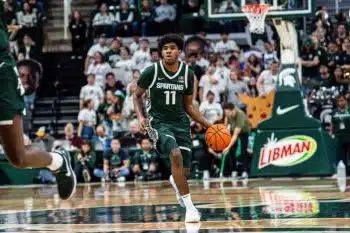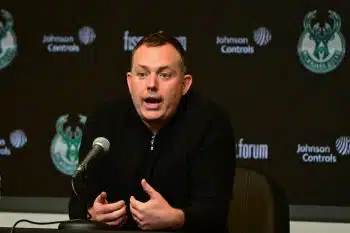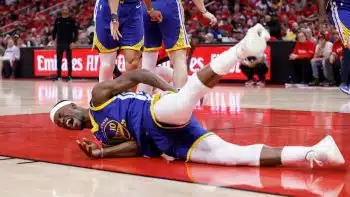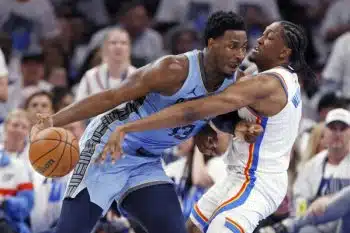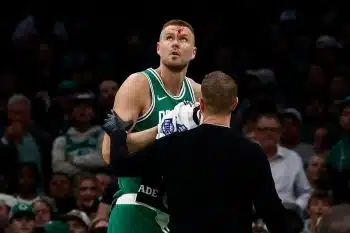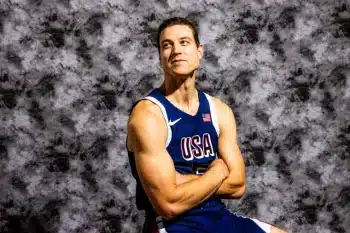NBA
NBA Daily: The Continued Rise of Lonzo Ball
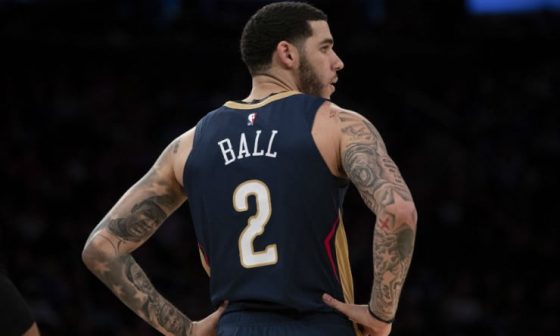
Between his own team’s struggles and the rookie sensation that has become his brother, LeMelo Ball, Lonzo Ball has fallen out of the spotlight.
Yes, the New Orleans Pelicans have disappointed. But that’s not the fault of the elder Ball brother, who has taken his game to new heights this season. If anything, his year-to-year improvement would show that there’s more on the horizon.
Ball entered the NBA in 2017, drafted by the Los Angeles Lakers with the second overall selection. Ball attended the University of California, Los Angeles, where his defense, shooting and playmaking brought him to the top of nearly every team’s big board. While at UCLA, Ball averaged 14.6 points, 6.0 rebounds and 7.6 assists per game and shot an efficient 55 percent from the field and 41.2 percent from three.
Despite those gaudy numbers, there was always concern about his shot. Mainly, Ball’s 67.3 percent free throw percentage led some to wonder whether his shot, coupled with his former funky form, would translate to the NBA level. And, during his rookie season, those concerns seemed more than validated, as Ball shot a woeful 36 percent from the field and 30.5 percent from three as he averaged just 10.2 points per game. His sophomore season saw slight improvements, but Ball remained well below league average.
It was only later, after Ball was traded to New Orleans and revamped his shot, that he began to show glimpses of the player many thought he would be.
In his first season with the Pelicans, Ball averaged just 11.8 points per game, but his three-point percentage skyrocketed. On 6.3 such shots per game, then a career-high, Ball knocked threes down at a 37.5 percent clip, also then a career-high.
Coming into the 2020-21 season, Ball needed to prove that his improved jumper wasn’t just an aberration, which it appeared to be early on. In the season’s first month, Ball shot just 39.7 percent from the field and 28.6 percent from three. Since, however, Ball has come alive from deep, as he’s shot 42.4 percent from three in the Pelicans’ last 23 games. On the season, Ball’s knocked down 38.1 percent of his threes, good for sixth among all players taking at least seven such shots per game.
Ball’s efficient scoring is an enormous boost to New Orleans and could completely change his outlook as an offensive player. His premiere trait has always been his vision in the passing lanes, generating shots and easy offense for others — and Ball has succeeded in that role, with a career average of 6.3 assists per game. But the NBA’s best playmakers, LeBron James, Nikola Jokic, James Harden, etc., are made that much more dangerous because of the threat they pose as scorers.
Case and point, if Ball can’t make his own offense from time-to-time, his playmaking is moot.
The importance of Ball’s efficiency is evident in his offensive rating over the course of his career. In his rookie season, Ball recorded an offensive rating of 104.7. In his second, Ball bumped that to 105.3. In his third, Ball’s first with New Orleans, it jumped to 109.6. And, this season, Ball’s offensive rating has exploded to 116.9, better than the Pelicans’ team mark of 115.3 and 23rd in the NBA among players with at least 30 games played.
It’s not a coincidence that Ball’s year-by-year improvement in offensive rating directly correlates to his progress in efficiency, either. Ball has a career-high 55.7 percent true shooting this season, up from 51.7 percent last year. And, despite averaging just three more points per game this season – and nearly two assists per game less – New Orleans’ offense is 7.4 points better when Ball is on the court, per NBA.com. Some of that would come down to an overall improved Pelicans offense, but Ball has played a considerable role in the team’s improvement on that end of the court.
While his play has been a revelation this season, is this the Ball we’ll see for the rest of his career? There is a lot of reason to be optimistic about Ball’s future, as his game has improved every season of his career and should continue to do so. From a shooting perspective, his improvement from the free throw line — Ball has shot 76.2 percent from the charity stripe this year, up 19.6 percent from a season ago — is just another positive sign that this version of Ball is here to stay.
With the way he’s playing and the improvement he’s shown, the Pelicans must do everything they can to retain Ball long-term, as he could play a critical role alongside cornerstones Zion Williamson and Brandon Ingram in the team’s future. He certainly has room left for growth and, if he can continue to improve, he’ll become that much more dangerous on the court.
So, while LaMelo may be hogging the headlines, keep an eye on Lonzo, who, in time, has shown that he can hang with the best of them, too.
